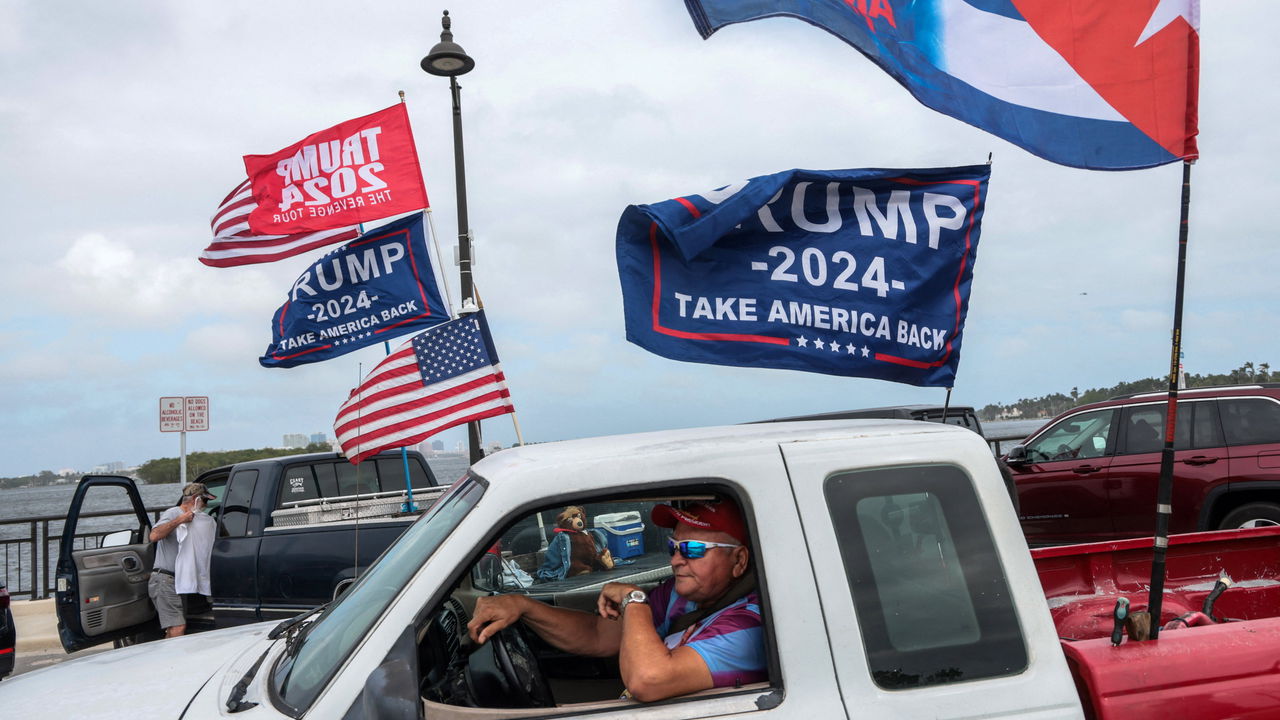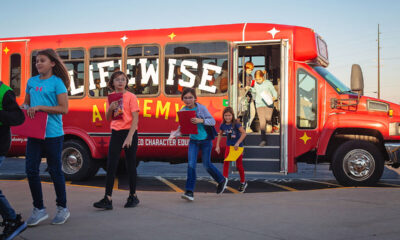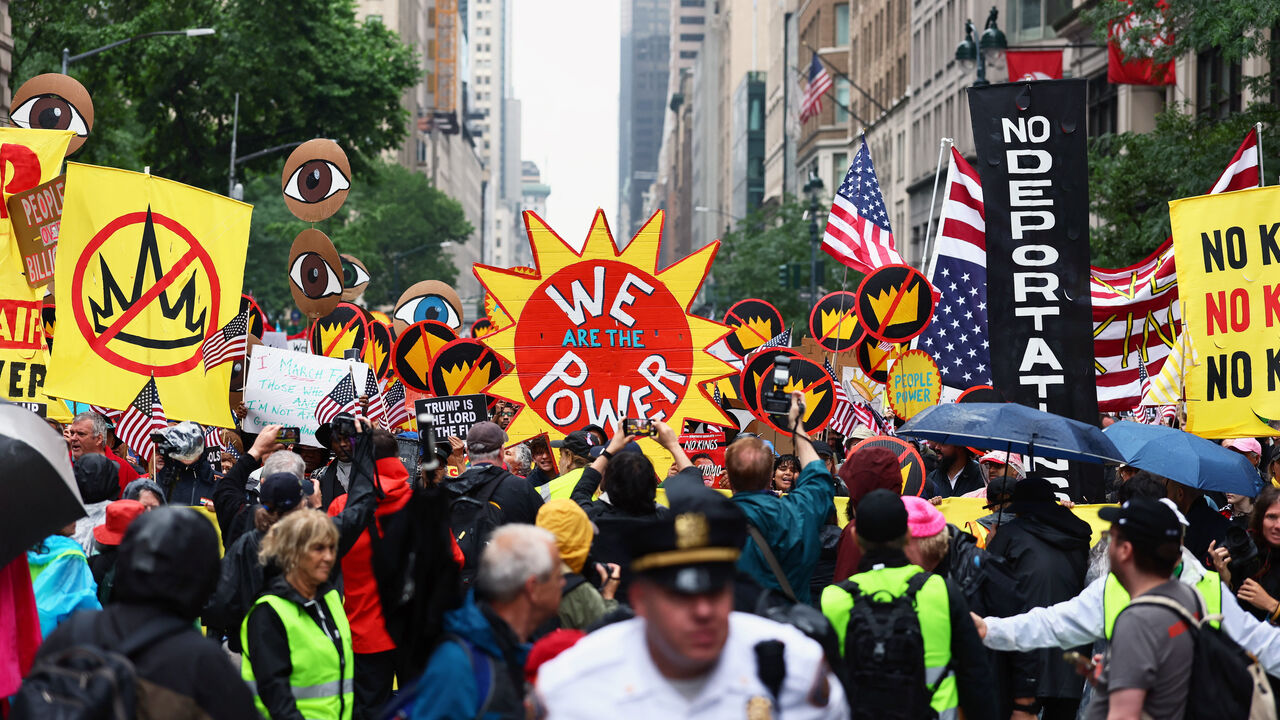THIS IS AMERICA’S closest presidential contest since at least 2000. With hours to go before the polls close, forecasting models, including The Economist’s, are showing a nearly 50/50 race, because swing-state polls are roughly tied. Thanks to one last batch on the campaign’s final day, our model favours Kamala Harris over Donald Trump by a very narrow margin, giving her a 56% chance of victory. Others show an even tighter race: Split Ticket puts Ms Harris on 53%, and both FiveThirtyEight and Silver Bulletin have her at 50%.
In states where our model gives the leader at least a 90% chance to win, Ms Harris has 226 electoral votes to Mr Trump’s 219. In the remaining seven states, the two are within three percentage points of each other in all state polling averages. Ms Harris is clinging to one-point leads in Michigan and Wisconsin; Mr Trump has similarly small edges in North Carolina and Georgia, and a slightly larger one in Arizona. Nevada and Pennsylvania are a dead heat.
The vice-president’s easiest path to victory is winning the Rust Belt states of Michigan, Pennsylvania and Wisconsin—just as the former president’s task is to break through this northern “blue wall”, as he did in 2016. If Ms Harris loses even one of these states, she would have to pick off a Sun Belt state where Mr Trump is currently in the lead.
And yet the race will probably not wind up as close as polls suggest. Since 1976, state polling averages have missed the final margin between the two nominees by an average of four percentage points. Moreover, when surveys underestimate a candidate in one part of the country, they generally err in the same way in other parts, too. At least a modest nationwide error is likely. Such an error, given how close the polls are, would probably deliver most or all of the swing states, and a decisive electoral-college victory, to whichever candidate benefits.
The chances of a big error may be even larger than usual this year because of evidence that at least some pollsters have been “herding”. This means that, when they get an outlier result, they decline to publish it or adjust their weighting to bring it closer to consensus. To be sure, America’s two most revered pollsters have released some stunning results this year. The New York Times and Siena College put Mr Trump up 13 points in Florida. On November 2nd, Ann Selzer gave Ms Harris a three-point lead in Iowa, which Mr Trump won by eight points in 2020. But the share of polls that put the candidates within a point of each other in the swing states is greater than random chance alone can explain.
Betting markets suggest that Mr Trump is likelier to outperform than is Ms Harris. On real-money exchanges with unlimited stakes, he is currently a 56-62% favourite. Some Democratic pundits dismiss this as “manipulation” by Trump supporters. Such charges are hard to stand up. Mr Trump is favoured on all major markets. Unless Elon Musk himself is propping him up on most of these sites, the prices simply reflect the (dollar-weighted) wisdom of crowds.
Three Trump cards
More convincing reasons can explain the divergence between models and markets. The first is that forecasts that rely mainly on state polling averages, rather than national ones, may be underestimating the “stickiness” of Mr Trump’s advantage in the electoral college. In 2016 and 2020, Democrats fared far better in the national popular vote than in Wisconsin, the state that delivered the decisive 270th vote in both elections. Currently Ms Harris clings to a tiny one-point edge in national polls.
Most of Mr Trump’s gains since 2020 have come from non-white and Hispanic voters, who are concentrated in big, uncompetitive states. State-level surveys support the idea that Republicans will “waste” many more votes this year: Mr Trump has inefficiently narrowed his deficit in New York and expanded his leads in Florida and Texas. None of that will decide the election. But if Ms Harris really does prevail by a single point in the popular vote, Mr Trump would need to retain only a fraction of his four-point electoral-college advantage of 2020 to return to the White House.
The second argument in Mr Trump’s favour lies in early-voting data. In 2020 Mr Trump denounced early and postal voting, allowing Democrats to bank huge leads before election day. This year he has sent mixed messages. As a result, the big gap in early voting that Democrats enjoyed four years ago has shrunk and, in some states, even become a deficit. Only when early-voting numbers started to come in did market prices begin to diverge from polling averages in 2024.
The third and final pro-Trump theory is that he is more likely than Ms Harris to outperform the polls because he did so in each of his past two campaigns. There are good reasons to expect this trend to continue. His supporters tend to distrust the media and universities, which account for most non-partisan public polling. This may make them less likely to participate in surveys. Pollsters use weighting methods to try to overcome this bias. But such efforts fail if Trump voters are less willing to share their views than are others with the same demographic profile.
Three Kam-terarguments
Or is it Ms Harris whom models are underestimating? Democrats offer three strong arguments for this. The first is an alternative explanation for previous polling errors that favoured Mr Trump. In 2016 many pollsters failed to weight their surveys by educational attainment. Because voters who graduated from college are very likely to talk to pollsters, this caused surveys to under-sample Mr Trump’s working-class supporters. By 2020 education weighting was de rigueur, but the incumbent beat his polls again, by an even greater margin.
Trump fans may believe that their man’s backers simply cannot be polled. But the 2020 election took place amid a once-in-a-century pandemic, in which Democrats were far more likely to stay at home, and so had time to participate in surveys, than Republicans were. Polls of the Trump-Biden race taken before covid began came much closer to the final result than subsequent ones did. No such imbalance in free time exists this year.
Most pollsters have also adopted “recall-vote weighting”, adjusting their samples so that the share of people who say that they supported Mr Biden and Mr Trump in 2020 matches the actual result. More respondents generally claim they voted for the winner of the past election than the number who actually did. As a result, recall weighting tends to increase vote shares for the party whose candidate lost last time: in this case, the Republicans. This method makes polls less accurate, but many firms lowballed Mr Trump for two straight cycles. Abundant recall weighting this time may have overshot the mark, which would raise the probability of a polling error in Ms Harris’s favour.
The second argument is that Ms Harris may have an advantage in the turnout battle. During Barack Obama’s two terms, Democrats depended on less reliable voters, and got walloped in midterm elections. But the Trump-era realignment, which has pushed college-educated voters towards Democrats and working-class ones towards Republicans, has reversed this dynamic. Since 2017 Democrats have consistently outperformed in lower-turnout contests. The “top-two” primary in Washington state, a reliable predictor of general elections, suggests a more Democratic national environment than current polls do, for instance.
The third argument is that Mr Trump’s tactics and strategy seem misaligned. He has given himself a tough task by focusing his campaign on appealing to groups with a low propensity to vote, such as young men and non-whites without college degrees. A candidate who is counting on such supporters should, as Mr Obama did, invest in a robust “ground game” to maximise turnout among expected backers.
Yet Mr Trump has outsourced most of this to an untested outfit funded by Mr Musk, called the America PAC. It is true that Hillary Clinton also enjoyed an advantage in field offices and among canvassers in 2016. But Mr Trump benefited from far more support from college-educated white voters that year than he is expected to in 2024.
The arguments are persuasive on both sides. So models are probably right to land around 50/50. But that is assuming the candidate who wins enough states to secure 270 electoral votes will also become president. And, if history is any guide, Mr Trump is unlikely to accept defeat. With six of the nine Supreme Court justices appointed by Republicans, a repeat of 2000—when the court handed the presidency to George W. Bush in an election decided by 537 votes—gives Mr Trump one more potential path back to the White House.

 Economics1 week ago
Economics1 week ago
 Economics1 week ago
Economics1 week ago
 Economics1 week ago
Economics1 week ago
 Finance1 week ago
Finance1 week ago
 Blog Post1 week ago
Blog Post1 week ago
 Economics1 week ago
Economics1 week ago
 Personal Finance1 week ago
Personal Finance1 week ago
 Economics1 week ago
Economics1 week ago





















